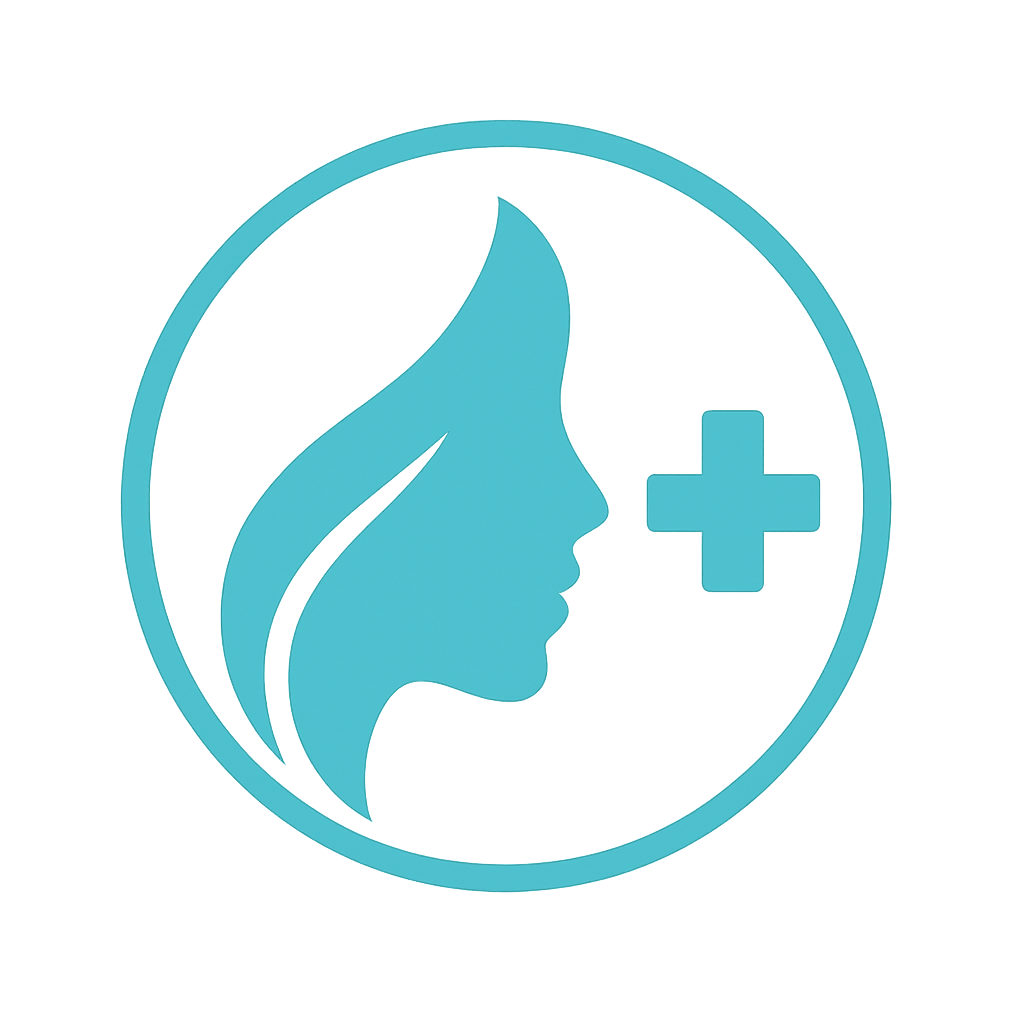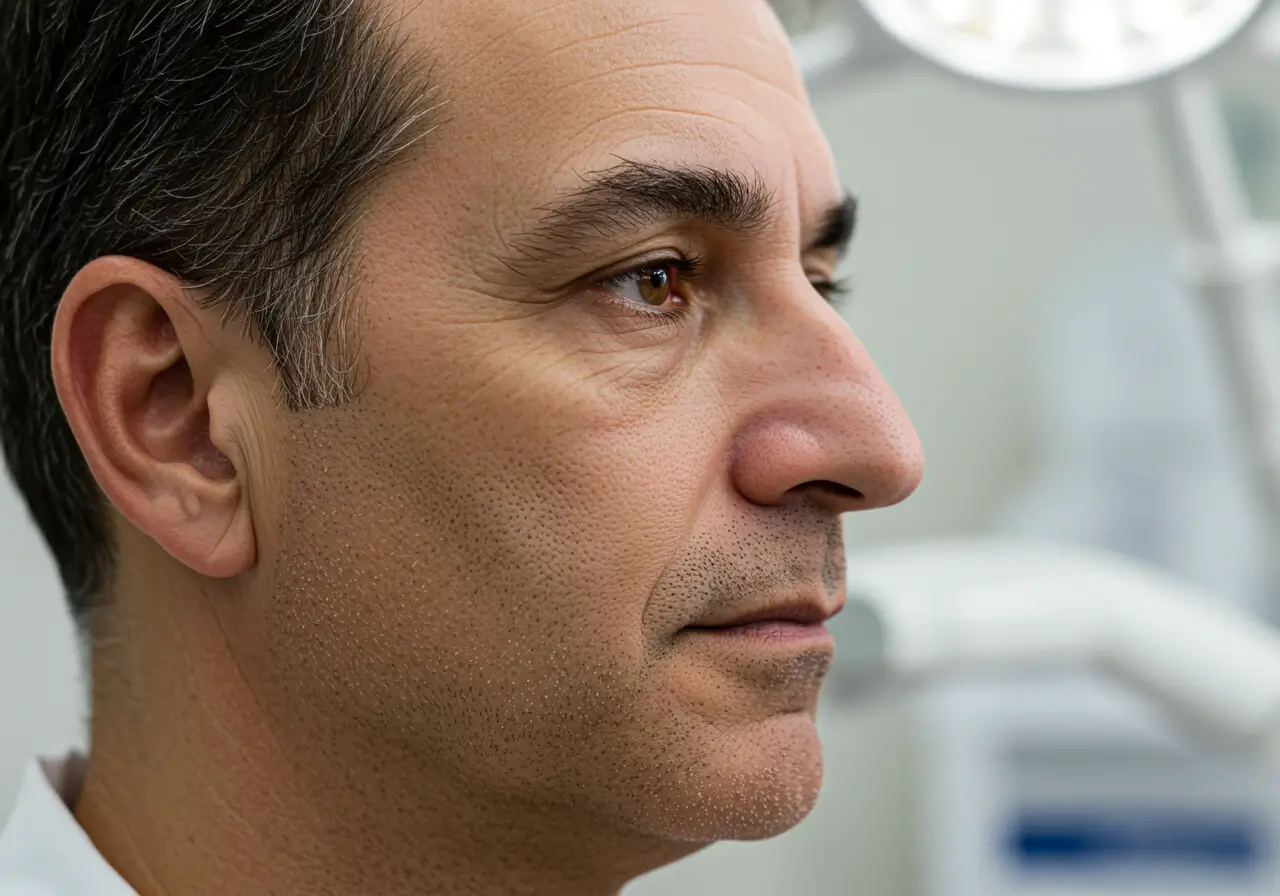Revision Rhinoplasty in Turkey
Previous rhinoplasty didn’t go as planned? You’re now stuck with the results.
You trusted a surgeon with your face, paid thousands of dollars, endured the recovery, and waited months for the final result. But instead of the nose you dreamed of, you got something that looks unnatural, affects your breathing, or just isn’t what you wanted.
You’re not alone, and you’re not being picky. Revision rhinoplasty exists because sometimes even experienced surgeons miss the mark. The good news? The right surgeon can fix what went wrong and give you the results you should have gotten the first time.
What Is Revision Rhinoplasty?
Revision rhinoplasty is rhinoplasty’s PhD program—exponentially more complex than primary surgery and requiring a surgeon with specialized expertise.
When you have revision rhinoplasty, you’re not working with a clean slate. The surgeon must navigate scar tissue, altered anatomy, and sometimes damaged or missing cartilage. It’s like trying to renovate a house that’s already been poorly renovated—you have to undo the mistakes before you can create something beautiful.
Revision rhinoplasty in Turkey has gained international recognition because Turkish surgeons regularly perform these challenging procedures and have developed specialized techniques for correcting various types of rhinoplasty failures.
Common Problems That Require Revision
The Pinched Nose: Over-aggressive removal of cartilage creates a collapsed, unnatural appearance. The nose looks “scooped out” or overly narrow.
The Polly Beak Deformity: When the tip drops and the bridge appears higher than intended, creating a parrot-beak profile.
Asymmetry: One side of the nose looks different from the other, creating an unbalanced appearance.
Breathing Problems: Previous surgery damaged internal structures, making breathing worse than before.
Over-projection or Under-projection: The nose sticks out too much or doesn’t project enough from the face.
Visible Scarring: Poor healing or surgical technique left visible scars.
The “Done” Look: The nose looks obviously surgical rather than natural.
Why Revision Is So Much Harder
Scar Tissue: Previous surgery creates internal scarring that obscures normal anatomy. The surgeon must work through this scar tissue to access structures.
Altered Anatomy: The first surgery changed your nasal structure. The surgeon must understand what was done before and how to work with the new anatomy.
Limited Materials: Previous surgery may have removed cartilage that’s now needed for reconstruction. The surgeon might need to harvest cartilage from your ear or rib.
Weakened Structure: Multiple surgeries can weaken the nose’s structural integrity, requiring more conservative approaches.
Patient Psychology: You’re understandably anxious about another surgery, making trust and communication crucial.
The Revision Process
Comprehensive Evaluation: Revision rhinoplasty requires extensive analysis of your previous surgery, current anatomy, and realistic goals for correction.
Surgical Planning: The surgeon must create a detailed plan that addresses specific problems while working within the constraints of your altered anatomy.
Technique Selection: Revision almost always requires open surgery for full visualization and access to damaged structures.
Grafting Requirements: Many revisions need cartilage grafts to rebuild damaged or missing structures.
What Realistic Results Look Like
Revision rhinoplasty can achieve dramatic improvements, but expectations must be realistic based on your starting point.
Achievable Goals:
- Significant improvement in appearance
- Restoration of natural-looking contours
- Improved breathing function
- Better facial balance
- Reduced anxiety about your appearance
Limitations:
- Perfect symmetry isn’t always possible
- Some irregularities may persist
- Skin thickness affects final refinement
- Multiple revisions may be needed in complex cases
Recovery Differences
Revision rhinoplasty recovery is typically longer and more complex than primary surgery.
Week 1-2: More swelling and bruising due to scar tissue manipulation. Discomfort may be greater than primary surgery.
Week 3-8: Gradual improvement, but swelling resolves more slowly due to compromised tissue.
Month 3-6: Significant improvement becomes apparent, though final results take longer to emerge.
Month 6-18: Full healing and final result emergence. Revision surgery often requires 12-18 months for complete healing.
Choosing the Right Revision Surgeon
Revision rhinoplasty requires specialized expertise beyond standard rhinoplasty training.
Essential Qualifications:
- Significant revision rhinoplasty experience
- Fellowship training in facial plastic surgery
- Before/after photos of revision cases
- Understanding of complex reconstruction techniques
- Honest assessment of what’s achievable
Red Flags:
- Promises of perfect results
- Minimal revision experience
- Reluctance to discuss limitations
- Pressure to proceed quickly
- Unrealistic timeline promises
The Emotional Factor
Revision rhinoplasty patients often struggle with disappointment, regret, and anxiety about another surgery.
Common Feelings:
- Anger at the previous surgeon
- Fear of another poor result
- Embarrassment about the current appearance
- Urgency to fix the problem immediately
Healthy Approach:
- Take time to process the disappointment
- Research thoroughly before choosing a revision surgeon
- Have realistic expectations about outcomes
- Consider the emotional investment of another surgery
When to Consider Revision
Timing Matters: Wait at least 12 months after primary surgery for complete healing before considering revision.
Valid Reasons:
- Obvious surgical complications
- Breathing problems caused by surgery
- Asymmetry or irregularities
- Unnatural appearance
- Failure to achieve reasonable goals
Poor Reasons:
- Minor imperfections
- Unrealistic expectations
- Immediate post-surgery anxiety
- Pressure from others
The Cost Reality
Revision rhinoplasty is more expensive than primary surgery due to increased complexity and time requirements.
Cost Factors:
- Surgeon’s revision expertise
- Surgery complexity and duration
- Grafting requirements
- Facility and anesthesia fees
- Extended recovery needs
Turkey Advantage: Revision rhinoplasty in Turkey offers access to specialized expertise at significantly lower costs than Western countries.
Why Turkey Excels at Revision Surgery
Revision rhinoplasty in Turkey has gained international recognition because Turkish surgeons regularly perform these challenging procedures.
Specialized Expertise: Turkish surgeons have developed advanced techniques for correcting various types of rhinoplasty failures, from structural problems to aesthetic irregularities.
Volume Experience: High patient volume means surgeons see diverse revision cases and develop expertise with different types of complications.
Advanced Techniques: Turkish surgeons use sophisticated reconstruction methods, including complex grafting procedures and preservation techniques.
Comprehensive Approach: Turkish medical facilities specialize in complete evaluation and treatment planning for complex revision cases.
Success Stories
Revision rhinoplasty patients often experience the most dramatic improvements in both appearance and confidence.
Common Outcomes:
- Restoration of natural nasal appearance
- Improved breathing function
- Elimination of obvious surgical signs
- Enhanced facial harmony
- Renewed confidence and self-esteem
Patient Feedback:
- “Finally got the nose I wanted originally”
- “Can breathe properly again”
- “Looks natural for the first time”
- “Worth the wait and extra investment”
Making the Decision
Questions to Ask Yourself:
- Have I waited at least 12 months since primary surgery?
- Are my concerns significant enough to warrant another surgery?
- Do I have realistic expectations about outcomes?
- Am I prepared for a potentially longer recovery?
- Have I researched revision specialists thoroughly?
Questions for Your Surgeon:
- How many revision cases do you perform annually?
- What specific problems can you address in my case?
- What grafting will be required?
- What are realistic expectations for my situation?
- What’s your revision rate for revision cases?
The Turkey Advantage for Revision Surgery
Turkey has become the global destination for revision rhinoplasty because of the unique combination of specialized expertise, advanced facilities, and comprehensive care approach.
Turkish surgeons understand that revision rhinoplasty requires both technical mastery and artistic vision to correct previous mistakes while creating natural-looking results. They’ve developed innovative techniques for working with compromised anatomy and have extensive experience with complex reconstruction cases.
The medical infrastructure supports these challenging procedures with state-of-the-art imaging, advanced surgical facilities, and comprehensive post-operative care. Many surgeons have international training and bring global best practices to Turkey’s patient-focused healthcare system.
Isthetique Medical Tourism, led by Dr. Khalique Zahir, specializes in complex revision cases. Dr. Zahir’s US training and board certification, combined with extensive experience in corrective rhinoplasty, ensures optimal outcomes for even the most challenging revision cases.
The comprehensive care model includes detailed analysis of previous surgery, precise surgical planning for correction, and extended follow-up to ensure successful healing and optimal results. Patients receive world-class revision expertise at a fraction of international costs.
Ready to get the results you should have gotten the first time? Schedule a consultation to learn whether revision rhinoplasty can address your specific concerns and restore your confidence.
You deserve the nose you originally wanted. Let’s make it happen.


